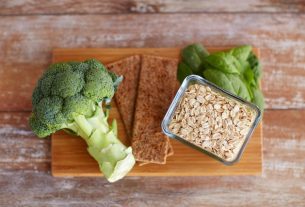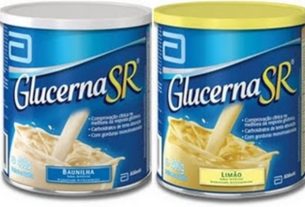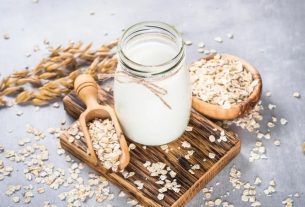Cracked nipples appear especially in the first weeks of breastfeeding due to the baby’s incorrect attachment to the breast, and small cracks and bleeding can be seen in the nipple.
Treatment for cracked nipples should be done by applying drops of breast milk to the nipple, as it acts as a moisturizer, reducing dryness and burning. Additionally, the gynecologist or general practitioner may recommend the use of ointment to alleviate discomfort.
In milder cases, it is important that the woman continues breastfeeding, as breast milk provides the necessary nutrients to strengthen the baby’s body. However, in more serious cases, it is important to consult your doctor so that other breastfeeding options can be evaluated.

How to cure cracked nipples
To heal cracked nipples faster, whenever the baby has finished feeding, it is recommended:
- Put a few drops of your own milk on the nippleletting it dry naturally, as milk is very moisturizing and has everything the skin needs to heal on its own;
- Apply a thin layer of ointmentlanolin, on the nipple after breastfeeding, which must be removed with a cotton pad dipped in water before the baby is breastfed again;
- Do about 15 minutes of top less dailyduring the breastfeeding period, preferably in the morning, before 10 am and after 4 pm, as it is recommended to be without sunscreen.
Another piece of advice is to just apply soap and water to the breast and then dry with gentle movements, using a soft towel. Next, you should place breastfeeding discs inside your bra because this helps keep your nipples more comfortable and dry, preventing infections.
See also some home remedies for cracked breasts.
What not to put on nipples
It is contraindicated to apply alcohol, merthiolate or any other disinfectant substance to the nipples during breastfeeding, so as not to harm the baby. It is also not recommended to apply bepantol, glycerin or petroleum jelly.
When there are changes such as sores on the nipples, what you should do is continue breastfeeding, being careful to check that the baby is breastfeeding in the correct position and only applying breast milk or lanolin ointment to the nipple, as these help to heal. without harming the baby.
Can I continue breastfeeding?
Yes, it is recommended that women continue breastfeeding because this way the milk does not accumulate causing even more pain. Milk and a small amount of blood can be ingested by the baby without any problem, but if the baby is bleeding a lot, the pediatrician should be informed.
When breastfeeding, it is very important to ensure that you are breastfeeding correctly, as this is one of the main causes of cracked nipples. See our breastfeeding guide with step-by-step instructions for breastfeeding correctly.
How to avoid
To avoid cracked nipples during breastfeeding, it is recommended to follow some simple tips:
- Apply a little milk to the nipple and areolalightly pressing each nipple until a little milk comes out after finishing breastfeeding;
- lightly pressing each nipple until a little milk comes out after finishing breastfeeding;
- Avoid using creams or ointments on the nipplesusing only if there are cracks and under medical supervision;
- Wear a nipple shield inside your bra and always wear a good breastfeeding bra, as the wrong size can harm milk production and removal;
- Take off your bra and expose your breasts to the sun for a few minutes to keep the nipples always dry, as humidity also favors the proliferation of fungi and bacteria.
The cracks are not caused by the time it takes the baby to breastfeed, but by the dryness of the skin and the baby’s “poor grip” on the areola, which is why this situation must be quickly corrected. The doctor or nurse will be able to help make it easier for the baby to latch on and thus improve milk flow and avoid the discomfort that cracks can cause.
Bibliography
- UNICEF UK. Guidance sheet 5B (chanllenges): sore, painful and/or cracked nipples. 2020. Disponível em: <https://www.unicef.org.uk/babyfriendly/wp-content/uploads/sites/2/2020/04/Unicef-UK-Baby-Friendly-Initiative-guidance-document-5b-challenges-sore-cracked-or-painful-nipples.pdf>. Acesso em 24 nov 2022
- DE LA HOZ, Deimer et al. Systematic review of causes and treatments for cracked nipples during breastfeeding. Framework. 15. 2; 218-228, 2019
- JARAUTA, Marina. Treatment for cracked nipples during breastfeeding: Literature Review. Final Degree Project, 2018. University of Lleida (UdL).
- ACT GOVERNMENT HEALTH DIRECTORATE. CRACKED & SORE NIPPLES. 2018. Disponível em: <https://www.health.act.gov.au/sites/default/files/2018-10/ACT_H_Cracked_Nipples_FactSheet_2018-v1.pdf>. Acesso em 24 nov 2022
- SANTOS, Kamila et al. Prevalence and factors associated withcracked nipples in the first monthpostpartum. BMC Pregnancy and Childbirth. 16. 1; 1-8, 2016

Sign up for our newsletter and stay up to date with exclusive news
that can transform your routine!
Warning: Undefined array key "title" in /home/storelat/public_html/wp-content/plugins/link-whisper-premium/templates/frontend/related-posts.php on line 12
Warning: Undefined array key "title_tag" in /home/storelat/public_html/wp-content/plugins/link-whisper-premium/templates/frontend/related-posts.php on line 13




